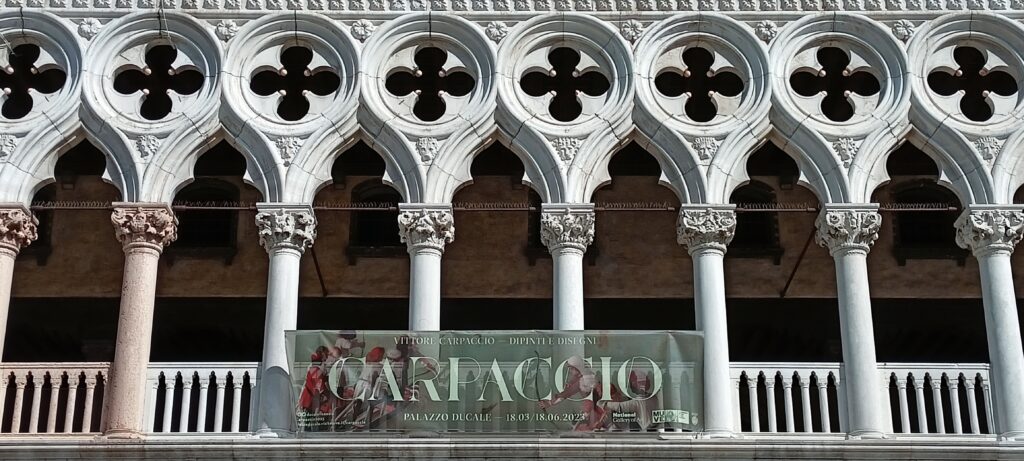VITTORE CARPACCIO
EXHIBITION IN THE DOGE'S PALACE
March 18 - June 18, 2023
On March 18, 2023, the exhibition of the Venetian early Renaissance artist Vittore Carpaccio was inaugurated. The painter, who lived at the turn of the 15th and 16th centuries, witnessed the greatest economic prosperity and territorial expansion of the Republic of Venice, which, from a mercantile centre connecting the worlds of the East and the West, transformed into a city teeming with cultural and artistic life.
Information on the website of the Venice City Museums
It is estimated that Venice was inhabited by about 200,000 inhabitants at that time, one third of which were foreigners. The artist’s surname itself Scarpazza or Scarpaza, which was an Italianization of the Latin form Carpathius or Carpatio used by Vittore as a signature in his paintings, raises much debate about his origins. However, it would be difficult to find a more accurate photojournalist of Venice at that time. In his works, Carpaccio combines maniacal accuracy in detail with the rich world of poetry and fantasy. Stories about saints and knights defending princesses from dragons were incorporated into the reality bustling with everyday affairs or embedded in the meditative routine of genre scenes. His paintings are a unique testimony of the era, the quintessence of the customs of the then Venetian society, open to the diversity of cultures and religions. In Carpaccio’s paintings, we will encounter plenty of exotic animals, figures in strange costumes and oriental architectural details combined with elements that characterise the city landscape of Venice to this day.
Vittore Carpaccio turned out to be an extremely prolific artist. He worked both for public and religious institutions and charitable organisations (altars, organ cabinet doors, votive depictions of the Madonna and Child or the Passion of Christ) and for private patronage (portraits, furniture, shutters).
The last major monographic exhibition of Vittore Carpaccio in Venice took place in 1963. It went down in the history of gastronomy because Giuseppe Cipriani (incidentally, the author of the famous drink Bellini) used the artist’s name when he gave the name Carpaccio to a portion of raw meat cut into thin slices.
The current exhibition was prepared in cooperation with the National Gallery in Washington, under the supervision of Peter Humfrey, an outstanding expert on Venetian Renaissance painting.
It is worth supplementing your knowledge about the legacy left by the artist by visiting the Saint Ursula cycle located in the Gallerie dell’Accademia National Museum and the precious Saint George cycle, which can be admired in the Dalmatian School from the beginning of the 16th century.
I assure you that travelling back in time with Vittore Carpaccio is great fun for children!
